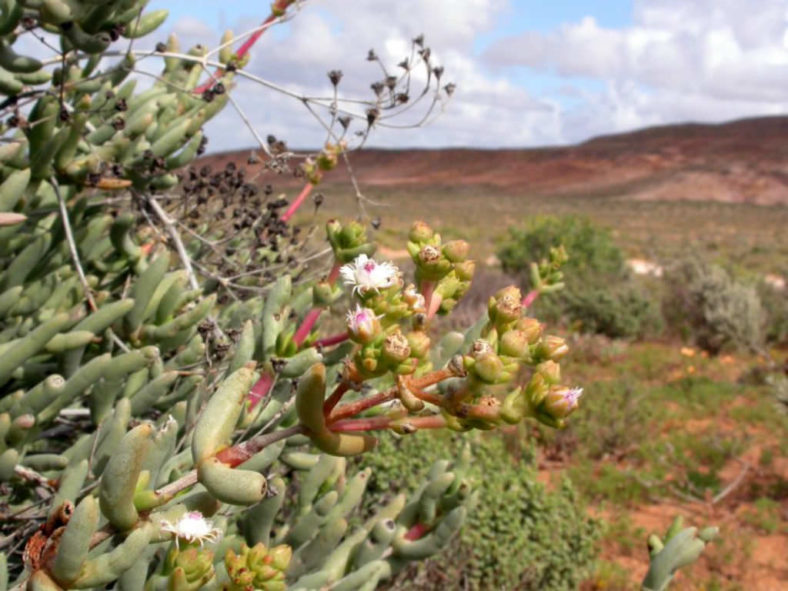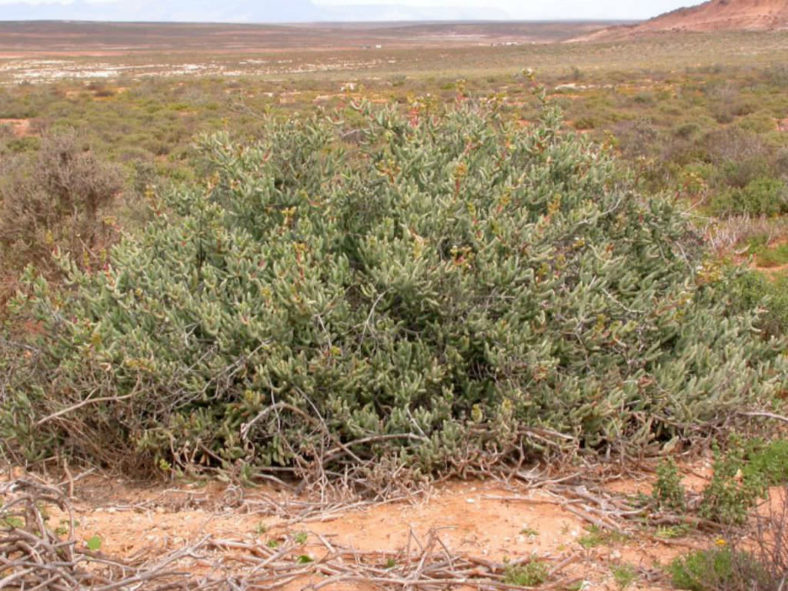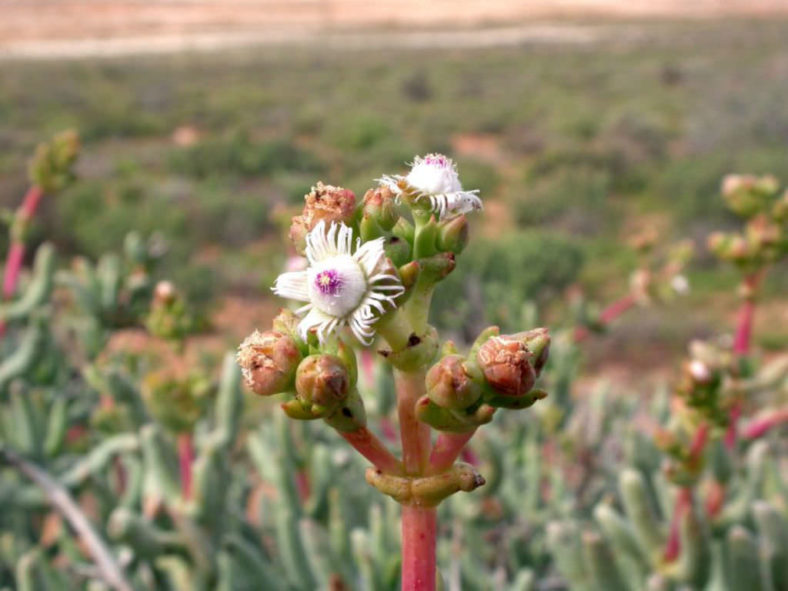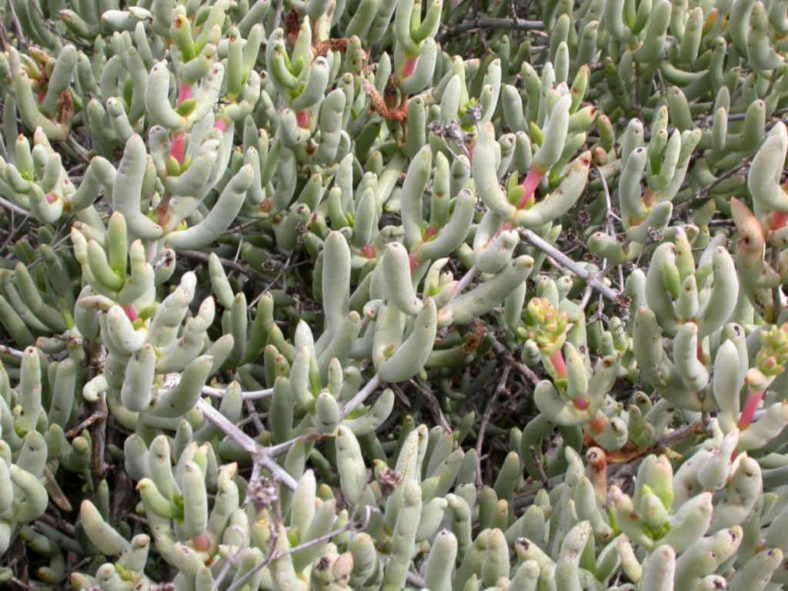Scientific Name
Stoeberia frutescens (L.Bolus) van Jaarsv.
Synonym(s)
Mesembryanthemum frutescens, Ruschia frutescens, Stoeberia beetzii var. arborescens
Scientific Classification
Family: Aizoaceae
Genus: Stoeberia
Origin
Stoeberia frutescens is native to Namibia.
Description
Stoeberia frutescens is a succulent shrub with gray-green leaves that grow in opposite pairs on yellowish-green to slightly orange branches. It can grow up to 5 feet (1.5 cm) tall. The leaves are club-shaped, fused at the base, measuring up to 2 inches (5 cm) long. They are smooth until moisture loss causes wrinkling. The internodes vary in length according to growing conditions.
The flowers have numerous white petals and erect stamens with tips flushed pink. They appear in winter and spring and can reach up to 0.5 inches (1.3 cm) in diameter. The fruits are capsules with hard, winged valves and contain flat, brown seeds.

Hardiness
USDA hardiness zones 9b to 11b: from 25 °F (−3.9 °C) to 50 °F (+10 °C).
How to Grow and Care
Mesembs are mostly adapted to relatively predictable rainfall patterns rather than extreme drought and irregular rainfall. Total rainfall may be extremely low, but water is available at least seasonally or through fog and condensation. This leads to or allows plants that are not especially large and sometimes very small and affects the way they need to be treated in cultivation.
The care basics are simple: free-draining soil, plenty of sun and ventilation, and regular light watering in the right season. Yet the difficulties are endless, trying to adapt to the Mesembs' adaptability and follow their growth habits in your particular conditions.
These plants require a loam-based compost with extra drainage material such as horticultural grit or perlite. They all like good light conditions and plenty of ventilation.
Some are relatively cold-hardy and can even survive mild winters outside. Most will withstand temperatures down to the freezing point. Some Mesembs begin to grow in the fall as the temperature drops and the days get shorter.
Learn more at How to Grow and Care for Mesembs.
Links
- Back to genus Stoeberia
- Succupedia: Browse succulents by Scientific Name, Common Name, Genus, Family, USDA Hardiness Zone, Origin, or cacti by Genus
Photo Gallery
Click on a photo to see a larger version.


